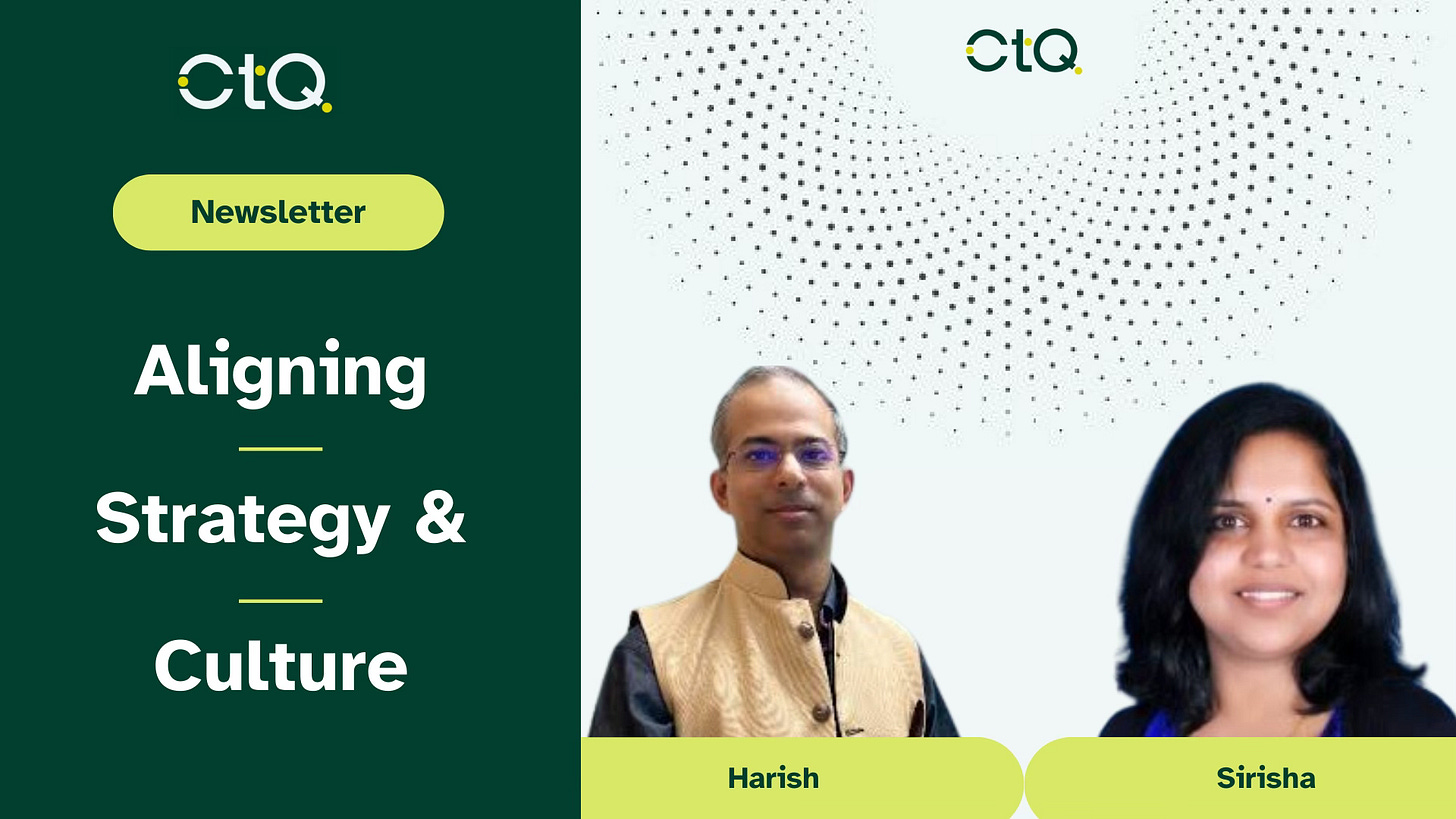In today's rapidly evolving business world, understanding the interplay between strategy and culture is vital for any organization, particularly startups and founders aimed at up-leveling their achievements. Today’s newsletter are excerpts from the podcast, “Brain Box - The Leadership Podcast” which our co-founder, Harish & Sirisha were invited to (Btw, they were voted 9th pan-India by Spotify in 2022)
They explore themes from their book "Hope is Not a Strategy," providing a structured understanding of culture, alignment, and strategy. And in this newsletter we point out very key aspects from this 90-minute chat.
The Foundation of Culture and Leadership
Culture is often misinterpreted as superficial perks, events, and employee happiness. Yet, Sirisha clarifies that culture goes beyond these trivialities. It is about expected behaviors within an organization, which are influenced by how cultural values are integrated into company processes. Leaders play a crucial role in modeling and realizing this culture.
Culture is a deep-seated element tied to organization-wide behavioral expectations.
Leadership is critical in setting the tone for cultural integration.
Culture cannot be confined to HR but should be a collective leadership responsibility.
Alignment Between Strategy and Culture
Culture and alignment are foundational, acting as a bridge for implementing strategy. As organizations grow, maintaining this alignment is fraught with challenges, especially during rapid growth phases. Founders must deliberate on choices and ensure all members of the organization understand their roles.
Alignment bridges the gap between strategy and cultural execution.
Clear articulation of roles and objectives is essential for coherent alignment.
Constant reinforcement and clarity support maintaining alignment over time.
The Role of Culture in Rapid Growth
During rapid growth phases, companies face pitfalls of misalignment between strategy and culture. Harish suggests that founders must take a step back to assess growth impacts, ensure cross-functional coherence, and address any silos that may form as organizations expand.
Founders should monitor growth impact to avoid strategic misalignment.
Cross-functional coherence is essential for overcoming silos.
Regular reflection helps align growth strategies with cultural values.
The Influence of Leadership
Leadership accountability is pivotal in driving cultural values. Leaders must walk the talk and integrate cultural values in various organizational systems, from recruitment to performance management, reinforcing these through rituals and stories.
Leadership models culture through example and decision-making.
Integrating culture into processes facilitates organizational reinforcement.
Collective leadership accountability ensures culture is upheld and enacted.
In Office vs. Remote Work
The ongoing debate about remote versus in-office work is contextual. What matters is a company's capability to uphold its defined culture in either setup. Harish and Sirisha emphasize that the choice should be deliberate and aligned with the organization’s nature of work, capacity, and goals.
The choice between remote and in-office work depends on organizational context.
Culture can thrive in any setup if based on deliberate design and reinforcement.
Flexibility and adaptability to changes are crucial for cultural maintenance.
The Balance of Profit and Purpose
Organizations often face the dilemma of balancing profit with purpose. Harish explains that defining clear, meaningful purposes, even those unrelated to core business activities, can motivate different employee groups and enhance company loyalty.
Purpose-driven goals enhance loyalty and engagement.
Clear definitions of purpose align with organizational profit goals.
Purpose can manifest through social responsibility or broader mission initiatives.
Both Harish and Sirisha underscore the significance of a deliberate, well-structured approach to culture and alignment within organizations. By embedding cultural values into the strategic execution, leaders can secure sustainable growth and cohesive company performance.
For those aiming to up-level their organizations, understanding and applying these insights can lead to a stronger cultural foundation aligned with strategic aspirations. The conversation around these themes continues to evolve, driven by the core belief that hope alone is inadequate; strategic intent and alignment must guide every aspect of organizational progress.
We hope you liked this newsletter and if you wish to uplevel
Yourself: Watch our YouTube Playlist & join CTQ Compounds.
Your Team: See our Case Studies & connect with us



